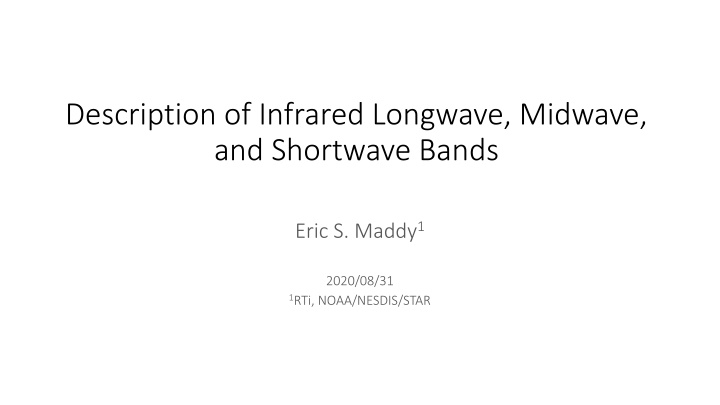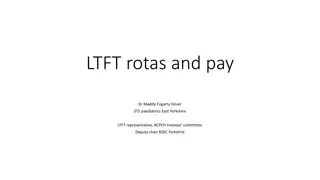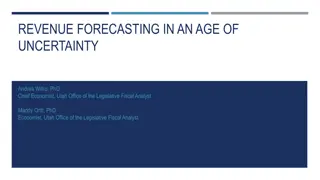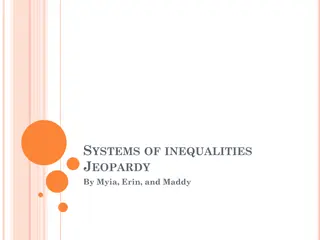
Infrared Bands: Longwave, Midwave, and Shortwave
Explore the distinctions and applications of infrared longwave, midwave, and shortwave bands. Gain insights into the simulated IASI infrared spectrum, sensitivities, and challenges faced in utilizing these bands effectively.
Download Presentation

Please find below an Image/Link to download the presentation.
The content on the website is provided AS IS for your information and personal use only. It may not be sold, licensed, or shared on other websites without obtaining consent from the author. If you encounter any issues during the download, it is possible that the publisher has removed the file from their server.
You are allowed to download the files provided on this website for personal or commercial use, subject to the condition that they are used lawfully. All files are the property of their respective owners.
The content on the website is provided AS IS for your information and personal use only. It may not be sold, licensed, or shared on other websites without obtaining consent from the author.
E N D
Presentation Transcript
Description of Infrared Longwave, Midwave, and Shortwave Bands Eric S. Maddy1 2020/08/31 1RTi, NOAA/NESDIS/STAR
Typical Simulated IASI Infrared Spectrum and Sensitivities Geophysical State Perturbations and RTM Assumptions Longwave Midwave Shortwave Longwave 650cm-1 to 1210cm-1 15.5 m to 8.3 m Midwave 1210cm-1 to 2100cm-1 8.3 m to 5.0 m Shortwave 2100cm-1 to 2760cm-1 5.0 m to 3.6 m Does not included fixed gases in fast CRTM model (e.g., CFCs, NH3, HNO3, SO2, HDO, )
Typical Simulated IASI Infrared Spectrum and Sensitivities Geophysical State Perturbations and RTM Assumptions Longwave 650cm-1 to 1210cm-1 15.5 m to 8.3 m Midwave 1210cm-1 to 2100cm-1 8.3 m to 5.0 m Shortwave 2100cm-1 to 2760cm-1 5.0 m to 3.6 m 15 m and 4.3 m CO2 T(p) sounding 6.7 m Water Sounding Does not included fixed gases in fast CRTM model (e.g., CFCs, NH3, HNO3, SO2, HDO, )
Overview of LW, MW, SW Ranges, Uses, and the Challenges in the Utilization of those bands Longwave Longwave Midwave Midwave Shortwave Shortwave 650cm-1 to 1210cm-1 15.5 m to 8.3 m 1210cm-1 to 2100cm-1 8.3 m to 5.0 m 2100cm-1 to 2760cm-1 5.0 m to 3.6 m Spectral Range T(p), Cloud, Tskin, O3(p), H2O(total) Main Uses H2O(p), T(p), Cloud T(p), Cloud, Tskin, H2O(total) Minor Species / Spectral Interference SO2, CO, N2O, NonLTE, Solar, HDO, CH4 CFCs, NH3, VOCs CH4, N2O, HNO3, HDO Line Parameters/Mixing: 0.2-0.5K NonLTE Parameterizations3 up to ~1K Spectroscopic Uncertainties (Estimated)1,2 Line Parameters/Mixing : 0.2-0.5K Line Parameters/Mixing : 0.2-0.5K 1https://acp.copernicus.org/articles/13/6687/2013/acp-13-6687-2013.pdf 2https://amt.copernicus.org/articles/13/323/2020/amt-13-323-2020-discussion.html 3https://agupubs.onlinelibrary.wiley.com/doi/full/10.1029/2020JD032710 Minor species in italics directly affect ability to accurately sound temperature and/or moisture.



